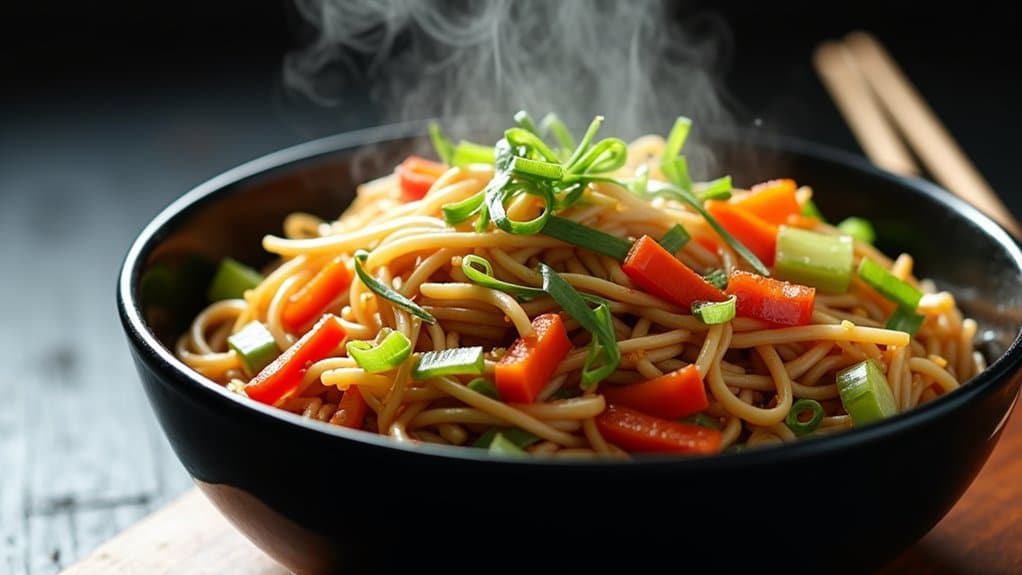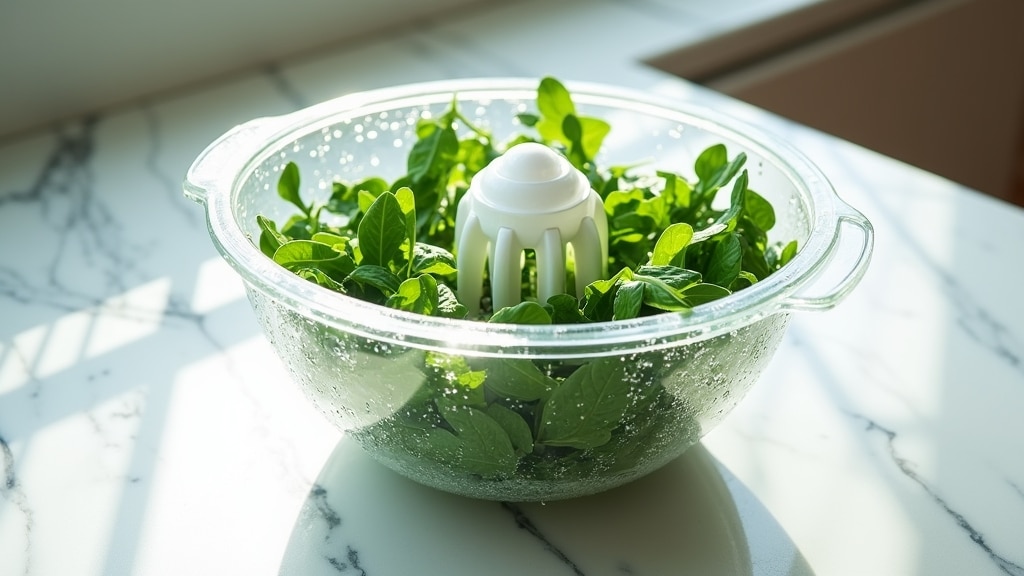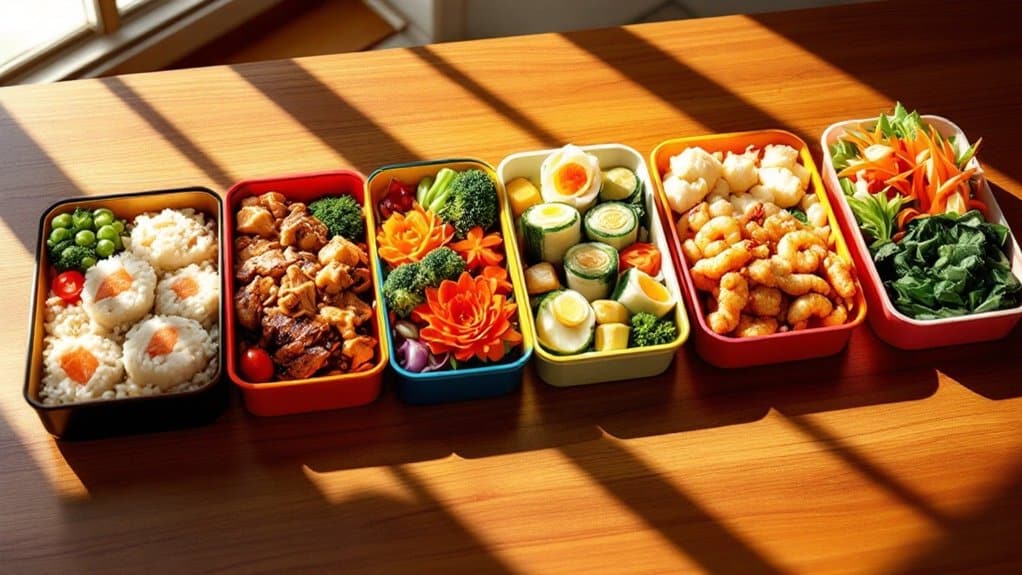Making vegetable lo mein at home can be much simpler than ordering takeout, and with just five ingredients, you can create a delicious version of this Chinese classic. The secret lies in properly cooking the noodles and timing the addition of vegetables to achieve the perfect texture.
This simplified version focuses on the essential components that deliver the authentic lo mein experience while keeping the ingredient list manageable for any home cook. The combination of tender noodles, fresh vegetables, and a simple sauce creates a satisfying meal that can be prepared in minutes.
- Chinese egg noodles (lo mein noodles)
- Mixed vegetables (carrots and snap peas)
- Soy sauce
- Sesame oil
- Vegetable oil
Cook the lo mein noodles according to package instructions until al dente, then drain and set aside. Heat vegetable oil in a large wok or skillet over high heat, add vegetables, and stir-fry for 2-3 minutes until crisp-tender. Add the cooked noodles to the wok, pour in soy sauce and sesame oil, then toss everything together until well combined and heated through, about 2-3 minutes more.
For best results, cook noodles just until they’re slightly underdone as they’ll continue cooking when added to the wok. Prepare all ingredients before cooking, as the process moves quickly once heat is applied. If the noodles stick together after draining, rinse them quickly under cold water and drain well before adding to the wok. The dish is best served immediately while the vegetables maintain their crunch and the noodles are hot.
History of Lo Mein
Lo mein originated in China as a variation of traditional wheat noodle dishes, with the term “lo mein” literally meaning “stirred noodles” in Cantonese.
This beloved dish emerged during the Han Dynasty (206 BCE – 220 CE), when wheat cultivation became widespread throughout China.
The vegetarian version gained popularity among Buddhist monks who adhered to meat-free diets. As Buddhism spread across Asia, so did meat-free noodle dishes like vegetable lo mein.
When Chinese immigrants arrived in America during the 1800s, they adapted lo mein to local tastes and available ingredients.
Though quite different from its traditional roots, the dish became a staple in Chinese-American restaurants.
While authentic Chinese lo mein is typically served with thin, crispy noodles, American versions feature softer, thicker noodles and more sauce.
Vegetable Lo Mein Recipe
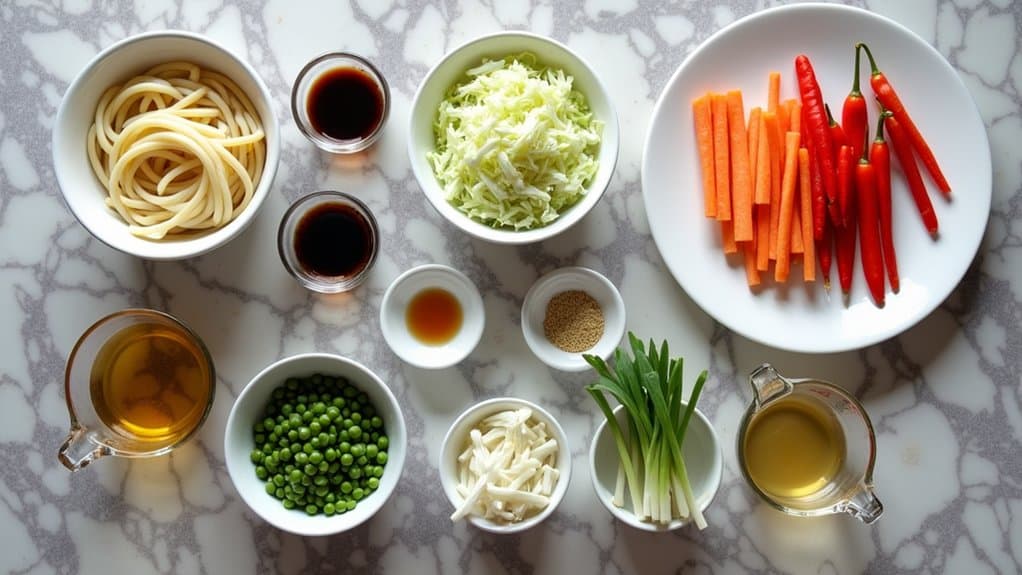
Vegetable Lo Mein
This classic Chinese noodle dish combines soft egg noodles with stir-fried vegetables in a savory sauce. The dish offers a perfect balance of textures and flavors, making it an excellent choice for both casual weeknight dinners and special occasions.
Total preparation time is 20 minutes, with cooking time taking approximately 15 minutes. This recipe serves 4 people and can be easily modified to accommodate different vegetables based on seasonal availability or personal preference.
Ingredients:
- 1 pound lo mein noodles or Chinese egg noodles
- 3 tablespoons soy sauce
- 2 tablespoons dark soy sauce
- 1 tablespoon sesame oil
- 2 tablespoons vegetable oil
- 2 cups shredded cabbage
- 1 carrot, julienned
- 1 red bell pepper, sliced
- 2 cups bean sprouts
- 4 green onions, chopped
- 3 cloves garlic, minced
- 1 tablespoon ginger, minced
- 1/2 cup vegetable broth
Tools:
- Large wok or deep skillet
- Large pot for boiling noodles
- Colander
- Cutting board
- Sharp knife
- Measuring spoons
- Mixing bowls
- Wooden spoon or spatula
Boil noodles according to package instructions until al dente. Meanwhile, mix soy sauce, sesame oil, and vegetable broth in a bowl.
Heat vegetable oil in a wok over high heat. Add garlic and ginger, and stir-fry for 30 seconds. Add vegetables except green onions, stir-fry for 3-4 minutes until crisp-tender.
Add drained noodles and sauce mixture, toss until well combined and heated through (2-3 minutes). Top with green onions before serving.
Nutrition Information (per serving):
Calories: 380
Protein: 12g
Carbohydrates: 65g
Fat: 9g
Fiber: 4g
Sodium: 890mg
Iron: 2.5mg
Vitamin A: 3500IU
Vitamin C: 45mg
For best results, prepare all vegetables before cooking, as stir-frying moves quickly.
Avoid overcooking the noodles, as they will continue to soften when added to the wok. The dish can be stored in an airtight container in the refrigerator for up to 3 days, though the texture is best when served fresh.
If the noodles become dry when reheating, add a vegetable broth or water splash.
Lo Mein
Cooking Steps
The cooking process for vegetable lo mein follows a natural progression that leads to a perfectly balanced dish.
Beginning with boiling water for the noodles and prepping fresh vegetables, the technique moves to wok-frying the vegetables until they reach that ideal tender-crisp texture.
The final magic happens when the cooked noodles meet the sauce and vegetables in the wok, creating that authentic restaurant-style lo mein we all crave.
Step 1. Boil a Large Pot of Water
Begin by filling a large pot with approximately 4-5 quarts of water and placing it over high heat.
This generous amount guarantees your noodles will have plenty of room to dance around while cooking, preventing them from clumping together.
While waiting for the water to boil, add 1-2 tablespoons of salt.
Trust me, this seemingly small step makes a difference in the final taste of your lo mein. The water should taste like the sea – that’s your goal!
Watch for large bubbles breaking consistently at the surface – that’s your signal that the water has reached a rolling boil.
The steam rising should be vigorous and steady.
Don’t be tempted to add the noodles before this point, as they won’t cook properly in water that’s not hot enough.
Step 2. Prep Noodles and Vegetables
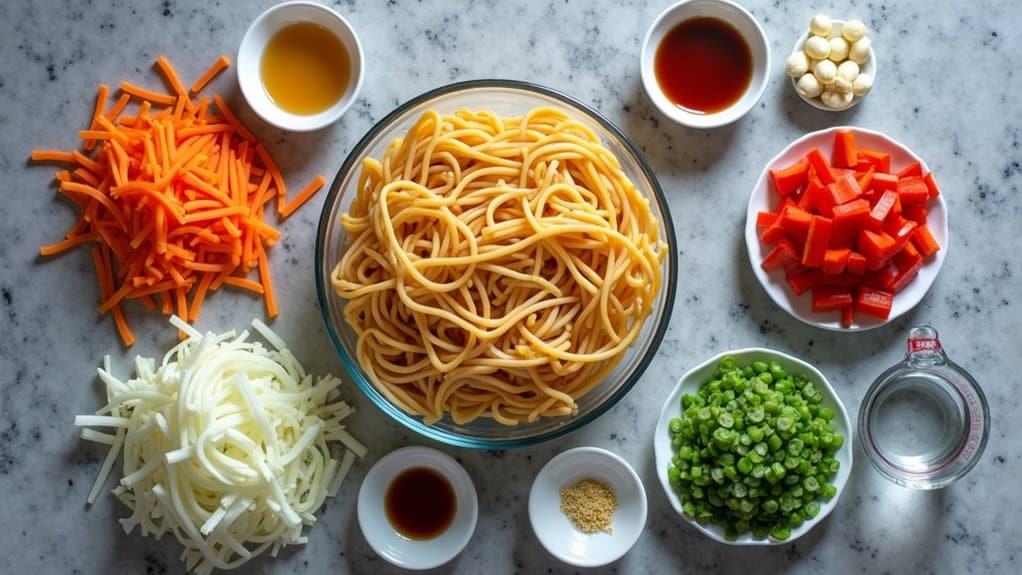
While your water reaches a rolling boil, slice bell peppers into thin strips, julienne carrots into matchsticks, and chop broccoli into bite-sized florets.
Set aside your prepared vegetables and gather additional ingredients like snow peas, bean sprouts, or mushrooms that will make your lo mein uniquely yours.
Once your water is boiling, add the lo mein noodles and cook according to package directions, typically 4-5 minutes until al dente.
I like to test one noodle at the 3-minute mark – nobody likes mushy lo mein!
While the noodles cook, mince 3 garlic cloves and grate a 1-inch piece of fresh ginger.
Drain your noodles in a colander and rinse with cold water to stop the cooking process.
Toss with a tiny splash of sesame oil to prevent sticking.
Step 3. Heat Wok With Oil
Place your wok or large skillet over medium-high heat and let it warm up for 1-2 minutes until hot.
Add 2 tablespoons of vegetable oil, swirling it around to coat the cooking surface evenly. The oil should shimmer slightly, indicating it’s reached the perfect temperature for stir-frying.
This step is essential for achieving that authentic “wok hei” – that coveted smoky flavor that makes restaurant lo mein so irresistible.
I learned from experience that patience here pays off; rushing with a cooler wok leads to soggy vegetables and clumpy noodles.
Test the oil’s readiness by dropping a small piece of scallion into it. You’re ready to start cooking if it sizzles immediately with gentle bubbles forming around it.
If it sinks without sizzling, give your wok another minute to heat up.
Step 4. Stir-Fry Vegetables Until Tender
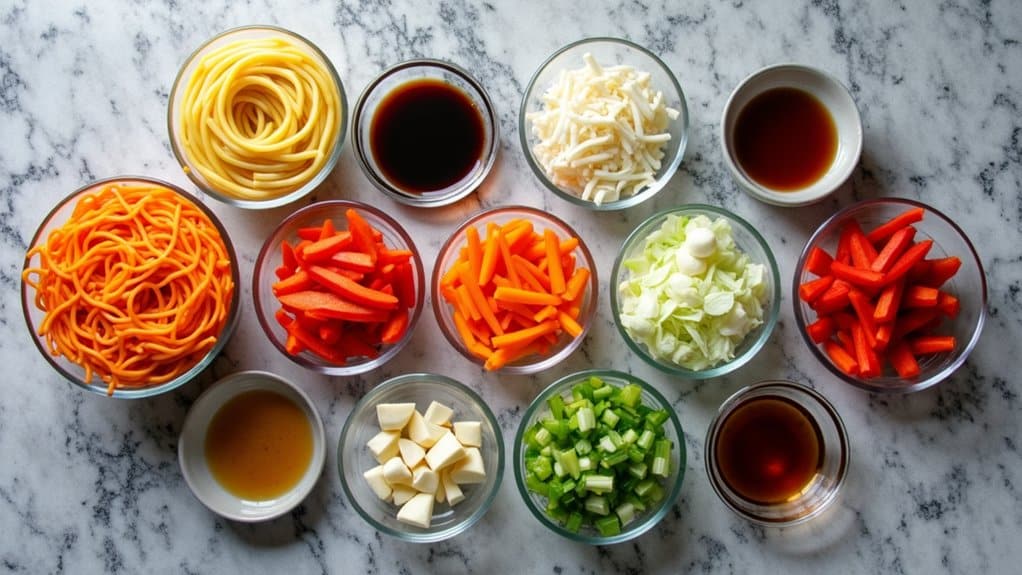
Toss your prepared vegetables into the hot wok in stages, starting with the firmest ones like carrots and broccoli.
These hardy vegetables need about 3-4 minutes to soften while maintaining their crunch. Keep them moving constantly with your spatula to prevent sticking or burning.
Next, add your medium-textured vegetables like bell peppers, snap peas, and mushrooms.
These need just 2-3 minutes to reach that perfect tender-crisp stage that makes lo mein so satisfying.
Finally, introduce the most delicate vegetables – bean sprouts, cabbage, and scallions.
These tender greens require only 1-2 minutes of cooking. You’ll know they’re ready when the cabbage starts to wilt slightly, and the bean sprouts become translucent while keeping their signature snap.
Step 4. Combine Noodles and Sauce
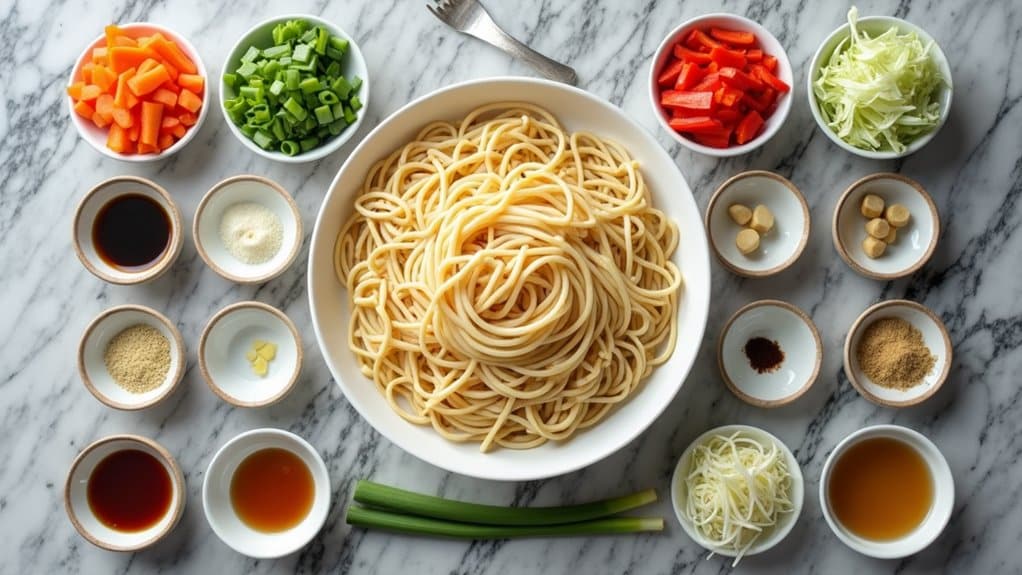
Add your cooked noodles back into the wok with the tender vegetables, creating space in the center of the pan.
Pour your prepared sauce mixture into this well and let it bubble for 30 seconds until it thickens. The aroma at this point will be absolutely irresistible!
Using tongs or two wooden spoons, gently toss the noodles and vegetables with the sauce, ensuring every strand gets evenly coated.
Keep the heat on medium-high and continue tossing for about 2-3 minutes. You’ll know it’s ready when the noodles take on a glossy sheen and have absorbed most of the sauce.
Give it a quick taste test – this is the chef’s privilege, after all!
Adjust the seasoning, adding more soy sauce or a pinch of white pepper to achieve that perfect balance.
Diabetic Friendly Adaptation
Here’s a diabetes-friendly adaptation of the vegetable lo mein recipe:
Ingredients
Noodles and Vegetables
- 8 oz shirataki noodles (zero-carb alternative) or whole wheat lo mein noodles
- 2 cups shredded cabbage
- 1 carrot, julienned
- 1 red bell pepper, sliced
- 2 cups bean sprouts
- 4 green onions, chopped
- 3 cloves garlic, minced
- 1 tablespoon ginger, minced
Modified Sauce
- 2 tablespoons low-sodium soy sauce
- 1 tablespoon dark soy sauce (reduced sodium)
- 1 tablespoon sesame oil
- 1/2 cup low-sodium vegetable broth
- 1 teaspoon monk fruit sweetener (optional)
Instructions
Preparation
- If using shirataki noodles, rinse thoroughly and dry-fry in a pan until excess moisture evaporates
- Prepare all vegetables before starting to cook
- Mix sauce ingredients in a small bowl
Cooking Method
- Heat 1 tablespoon vegetable oil in a wok over high heat
- Add garlic and ginger, stir-fry for 30 seconds
- Add firmer vegetables (carrots, bell peppers) and stir-fry for 2 minutes
- Add cabbage and bean sprouts, cook for 2 minutes more
- Add noodles and sauce mixture, toss until well combined
- Garnish with green onions
Diabetic Modifications
- Replaced traditional egg noodles with shirataki or whole wheat alternatives
- Reduced sodium content by using low-sodium soy sauce
- Increased fiber content with additional vegetables
- Eliminated added sugars
- Reduced oil quantity
- Added more vegetables for nutrients and fiber
- Portion control: recipe serves 4 generous portions
Storage
Store in an airtight container in the refrigerator for up to 3 days.
Summing it up
Versatility makes vegetable lo mein an excellent choice for quick weeknight dinners or sophisticated dinner parties. The combination of tender noodles, crisp vegetables, and savory sauce creates a harmonious dish that pleases both vegetarians and meat lovers alike.
With just a few basic ingredients and simple techniques, you can master this Chinese restaurant favorite in your own kitchen. The beauty lies in its adaptability – swap vegetables based on what’s in season or add your preferred protein for a heartier meal.
Remember to keep your noodles al dente and your vegetables crisp-tender for the perfect texture.
Whether serving it as a main course or an elegant side dish, vegetable lo mein always delivers satisfaction. It’s a dish that proves good food doesn’t need to be complicated to be delicious.

